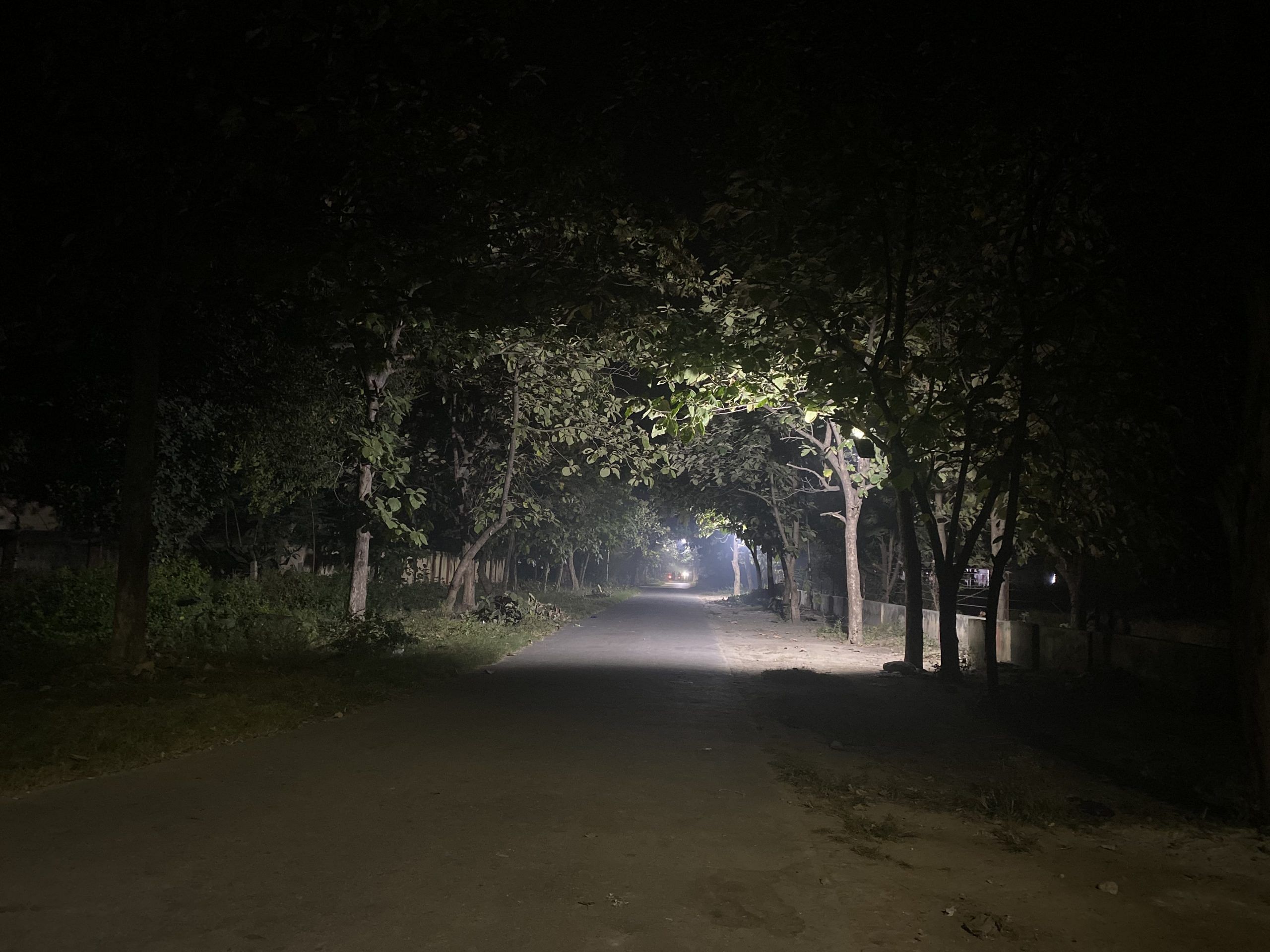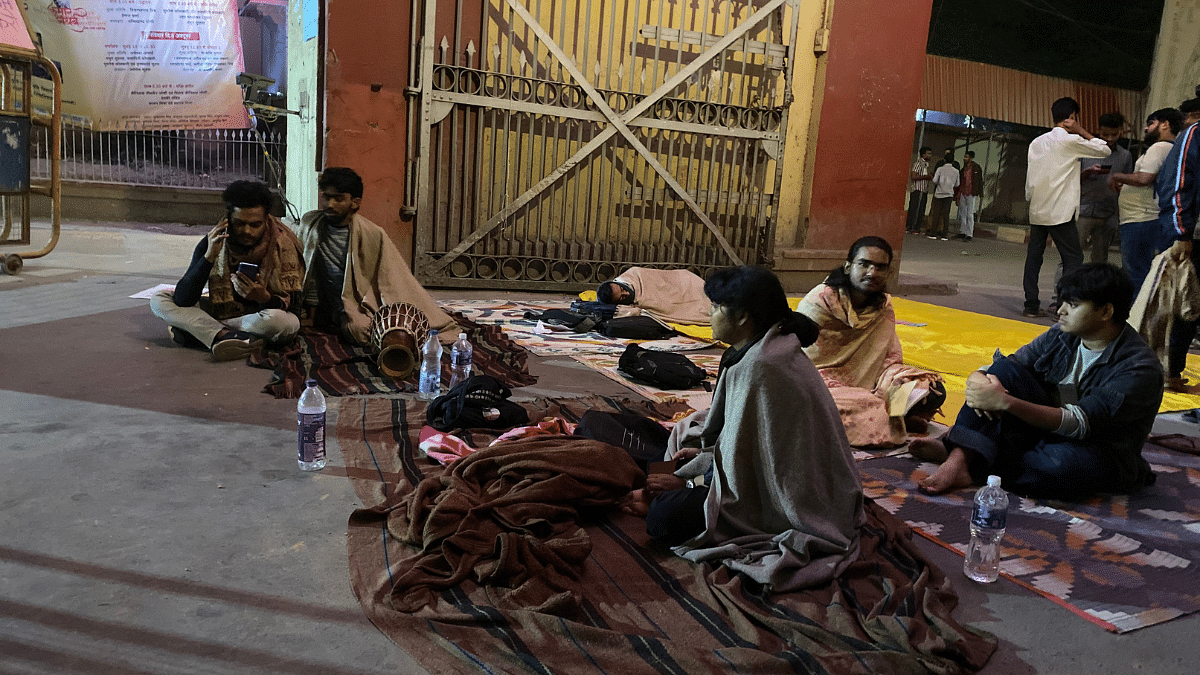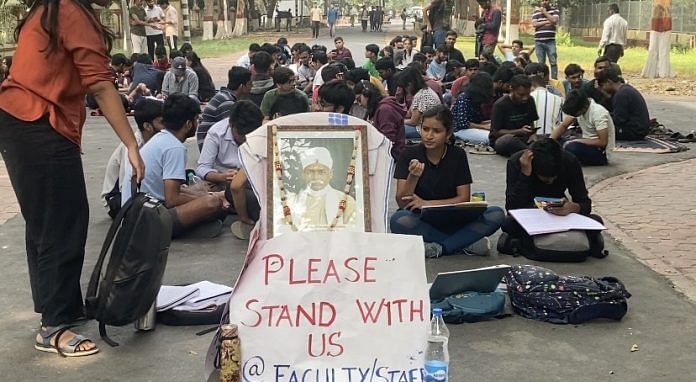Varanasi: Nineteen-year-old Rashmi* is reminded of her attacker every day when she walks from her hostel to her lecture hall at the venerable 107-year-old Banaras Hindu University.
“He was groping me and pulling my pants. I closed my eyes and asked for God to help me. A BHU employee arrived and saved me,” says Rashmi, who has a vision impairment. The incident happened in broad daylight on the afternoon of 25 January 2023.
Today, Rashmi’s fight for women’s safety on campus is overwhelmed by political protests and schisms among warring student organisations.
The sprawling 1,300-acre university campus, a portion of which is shared with the Indian Institute of Technology, BHU Varanasi, is turning into a hunting ground where women are prey. The historical campus with marquee alumni such as astrophysicist Jayant Vishnu Narlikar, scientist CNR Rao, former Nepal PM Girija Prasad Koirala, and academic and feminist Vina Mazumdar, is now rapidly gaining a new tag — unsafe for women.
Since January, eight women from BHU and IIT-BHU have reported being harassed, molested, and humiliated by men.
But two recent attacks on IIT-BHU students in less than a week—on the intervening night of 30-31 October and 2 November—has turned the campus into a volatile theatre of political protest.
It has pitted BHU students against their IIT counterparts; the Sangh Parivar-affiliated Akhil Bharatiya Vidyarthi Parishad (ABVP) against the All India Students’ Association (AISA) and Bhagat Singh Student’s Morcha, among others; scholars against the Varanasi Police and the administration for allegedly failing to ensure basic safety measures like functioning street lamps and CCTV surveillance. The attacks have galvanised political and social student activism in a university where elections have been banned since 2014. Now, tensions have spilled outside BHU’s walls.
Opposition leader Priyanka Gandhi has sought answers on the security situation on campuses, while the ABVP has accused UP Congress chief Ajay Rai of defaming prestigious academic institutions with “cheap politics”.
Of the 10 women attacked, five were from IIT-BHU and the other five from BHU.
That has led to an atmosphere of fear on the campus, so much so that students of the former have been demanding for a “closed campus” to keep campus safe. The issue has further exacerbated student strife.
While IIT-BHU students want “a green zone” on campus, BHU students say any attempt to partition it will be against the ethos of the university’s founder, Madan Mohan Malviya, who envisaged the institution as a capital of “all forms of learning” where prachi (East) meets prateechi (West). The fears around a possible partition have stemmed out of Varanasi Police’s assurance to IIT-BHU that a wall will be constructed to separate the two universities.
All the chatter in the university has now become trapped in heated emotions about pride, predators, and protest. And the safety of women has taken a back seat. Of the eight cases reported, the police have registered seven FIRs and arrested 11 people. All are out on bail.

The attack and the protests have soured Rashmi’s experience of college life. This was not the campus life she had imagined when she enrolled in BHU in November 2022 as a history honours student.
I studied in a special school from kindergarten till Class 12, which was a protected environment. When I cleared the BHU exam, I was elated because it’s a prestigious university. However, the incident changed that feeling, says Rashmi, who wants to join the civil services.
Both BHU and IIT-BHU are planning a slew of measures to tighten security and install more CCTVs on campus, but these are just surface changes, say young angry women of the university. In the absence of a gender sensitisation committee against sexual harassment (GSCASH), conversations turn into victim blaming and political mud-slinging.

Also read: Face of protest at BHU, ‘hardcore’ Bhagat Singh disciple — meet Akanksha Azad, now…
Unmanned, unlit roads
If the daily trek to the classroom wasn’t a reminder of what happened to Rashmi, the two recent attacks have rattled her fragile sense of security.
On the night of 30 October, four men physically assaulted a male student and groped an IIT-BHU woman student who was with him. Two days later, around 1:30 am, three men forcefully separated a 19-year-old IIT-BHU student from her male friend, stripped her, and then assaulted her while recording the entire incident on their cell phones. The incident took place near the Karman Veer Baba temple, situated within the IIT-BHU campus.
The incidents triggered a wave of protests as students pointed to the dysfunctional streetlights, broken CCTVs, the lack of guards, and poorly lit areas. Even in crowded areas, women have reported the general tendency of male students to leer at them and pass lewd remarks.
Female students prefer cutting across campus with their friends and are careful not to go out at night or frequent secluded spots even during the day. But these measures, borne out of fear and self-preservation, are no guarantee of safety.

Rashmi was attacked during the day. A man on a bike saw her walking on the road and offered to drop her off. He was insistent despite her reluctance.
“I refused his offer, but he repeatedly assured me that he only wanted to help. I asked him to drop me at Maitreyi Chauraha, as I was new to the campus,” she recalls.
But when he stopped the bike, she immediately realised that he had taken a detour. Maitreyi Chauraha is usually a busy, crowded area in Banaras— but here, the silence was deafening.
She alleged that her attacker—whom she identified as a former dean’s son—deliberately took her to the road abutting the Institute of Agricultural Sciences, BHU, which is a less frequented one.
“There was no one around at the time. He began groping me and assaulted an elderly BHU employee [who had arrived on the scene],” she says. The Varanasi Police arrested him a day later under various sections of the IPC, including stalking, but he got out on bail within hours.
In the wake of the attack, students with disabilities, too, held protests demanding stronger police action, better infrastructure, safer hostels for women, streetlights and security guards.
But little has changed on the ground.
“There are areas near the arts faculty and IIT gate that are dark because streetlights are not functioning,” says Simanti, a first-year commerce student.
Student organisations pointed to the lack of functional CCTVs. Only 69 cameras have been set up on the main university campus. BHU proctor Sujit Kumar Singh claimed they are functional but admitted that some older CCTVs “have visibility issues”. Students refute his claims—another example of the lack of trust in the administration.
“Students have filed several RTIs and been informed that only three-four CCTVs work,” claims Vandana, a member of the National Students’ Union of India (NSUI)’s BHU unit.
Rashmi also allegedly experienced apathy from the authorities when she was assigned a hostel, which she found unsuitable, as it was in an isolated location.
“I got it changed, and within two days, I was allocated [a room] in the old B1 hostel. But I did not like that location either. The adjacent road was also desolate. I requested the arts faculty dean to change it, but was told that it was against the rules,” she says.
The authorities obliged after she was molested on 25 January.
Also read: NIA raids BHU student leaders, PUCL members in 5 UP districts, says it’s a…
Are outsiders to blame?
The possibility that outsiders were involved in the two recent incidents has become a hot-button issue. In January, though, BHU students were found involved in one of the four incidents of harassment on campus. The son of a former BHU dean was arrested for molesting the visually impaired student; in another incident that occurred on 13 January, an outsider assaulted a woman just outside the Hyderabad Gate of BHU.
There is a perception that if a girl is venturing out at night, she is vulnerable to sexual offenders, says Aarohi*, 24.
And the presence of a male friend is no deterrent. “An offender may consider her an easy target because she’s accompanying a male,” she adds, drawing from her own experience.
On 4 January, weeks before Rashmi was attacked, Aarohi and her male friend were attacked by four men later identified as students of BHU’s Sanskrit Vidya Dharm.
According to the FIR, the accused were inebriated. They assaulted her male friend, snatched his purse and phone, and snuck back into the Ruia boys’ hostel on the BHU campus.
All the women that ThePrint spoke to say that they want more security guards and greater vigilance by existing personnel.
“The security guards get easily overpowered by male students who throw tantrums. At times, their approach toward complaints is that it is the victim’s fault,” says Seema*, who, along with her friend Varsha*, was allegedly sexually harassed by four men near the Limbdi hostel chauraha around 9:40 pm on 21 January.
The IIT-BHU administration says it is working with the BHU management to tighten security on campus. The tech institute alone has around 219 security guards, but currently, about 50 are on leave.
“A committee of four professors has been formed to look into the demands of the students. We have started the process of installing lights in dark areas near the Agricultural Sciences Institute and the spot where the incident took place,” says Utkarsh Srivastava, junior superintendent, PRO office, IIT-BHU.
BHU currently has 270 security guards and the administration plans to appoint more. “A tender process for installation of 350 CCTV cameras is in process,” says the proctor.
The great wall
Over the last few days, slogans have filled the vast campus, as students, their leaders, and alumni gather for protest and solidarity marches. Cries of ‘Mahamana ki kaamna, sadbhavna, sadbhavna (Mahamana’s desire—compassion, compassion)’ can be heard above all others.
For several days, student activists occupied BHU’s Lanka Gate. On 4 November, they alleged that ABVP members attempted to attack them. Many students told ThePrint that attackers shouted slogans such as “Naxali dalal wapas jao, Jinnah ke dalal wapas jao (Naxalite agents, go back, Jinnah agents, go back)” and “Vampanth ki ek dawai, joota chappal aur kutaayi (Only one treatment for Leftists, beat them up with shoes and slippers)”. The Varanasi Police, which was already on the spot, forced Bhagat Singh Student’s Morcha and AISA protesters to vacate Lanka Gate. As the groups clashed, student activists, including women, alleged that they were manhandled by BHU guards and the police.

BHU is one of the largest residential institutes in Asia. At its foundation stone-laying ceremony in 1916, MK Gandhi delivered one of his first speeches on self-government and criticised the English language. A hundred years later, Prime Minister Narendra Modi addressed the centenary year convocation.
What Jawaharlal Nehru University (JNU) is to Delhi, BHU is to UP. It has been a petri dish for several Hindi belt politicians. Its student leaders went on to become politicians, Padma awardees, MPs, including Manoj Sinha, Rajesh Kumar Mishra, and Kedar Nath Singh. In 2014, the students’ union elections, which were marred by violence, were banned.
The recent protests are a throwback to the days of political activism—and the idea of a wall between BHU and IIT-BHU continues to keep students at loggerheads.
When BHU’s technology wing was granted IIT status in 2012, it was a moment of pride for the university. But over the years, students who come from metropolitan cities like Mumbai and Delhi have been demanding a closed campus.
The idea of a wall first came up in meeting between IIT-BHU’s Students’ Parliament, Varanasi Police, and IIT administration after the 2 November attack. The Varanasi Police went a step ahead and assured them that the wall would be built. But the demand did not go down well with BHU students. On 5 November, students, ex-teachers, and alumni from the main BHS campus came together to protest the construction of the wall.
“BHU administration and [the] police are so negligent. Even as the accused are yet to be arrested, police are detaining protesting students and the solution they are giving for ensuring students’ safety is partitioning BHU,” says Rajiv Nayan, president of the NSUI unit of BHU.
Former BHU vice-chancellor Panjab Singh foresaw these divisions between the elite IIT and the rest of BHU early on. When the Bill to award IIT status to BHU was tabled in Parliament, he suggested to former Rajya Sabha MP Karan Singh that the Bill should mandate that the BHU administration would continue to manage the tech wing. He was apprehensive that separate administrative systems would eventually develop differences.
“He [Karan Singh] told me that the provision could be added later, but I warned him that it would never happen — that a day would come when IIT and BHU will evolve as two separate systems and a wall would be built between the two. But there was so much pressure [on administration] that time,” he says.
Singh can’t help but wonder if he made a mistake.
Can anyone assure that such incidents can be stopped by constructing a wall? BHU should not be de-shaped, he says.
‘Why did you go out at night?’
The eight attacks on women expose a deeper malaise on the BHU campus. It’s an open secret that the number of attacks is much higher, hidden only due to women remaining silent. For years, students have been demanding that a GSCASH committee be set up, but so far, nothing has come of it.
“We hope that a big decision will come soon,” the BHU proctor says.
Instead of empathy, victims of harassment are met with a barrage of questions from their peers. Why did she go out at night? Why did she accept a ride from a stranger? What was she doing in such a secluded spot in the first place?
According to the proctor, security is a joint responsibility of teachers, non-teaching staff, and also the students. “Only repeated warnings can help them [students] realise that they are doing something wrong by venturing in areas that they are warned not to and our effort is on in that direction,” Singh says.
Moreover, women students are being pressured by their parents to focus on academics. Meanwhile, their attackers, out on bail, are always lurking in the corner.
“Several cases go unreported as students are scared to come forward and feel discouraged to share their ordeal,” says Sidhi Bismil, joint secretary of the Bhagat Singh Student’s Morcha, which has been leading an indefinite protest demanding the arrest of the accused.
Another layer of grievances adds to the discontent in BHU — even IIT-BHU students are unhappy with their administration. Ankita* and her friend say they expected more support from their management after they were sexually harassed by four men in a black SUV on the night of 17 October while returning from the laboratory.
“When they were caught by the police, the men claimed to be BHU students but were unable to show any identity cards. It proves that they were outsiders. They were granted bail within hours,” Ankita* told ThePrint.
She has lost count of the number of times she has visited the police station and is now losing interest in pursuing the case due to the “lack of support”, not just from IIT-BHU, but her parents as well. Her professor, too, suggested stepping back, reminding them that their “main aim was studies”.
“We are thinking about taking a step back because we are unable to devote enough time to the case. We have been told that we have to be present before the police. Had enough help come from the proctorial board, this would not have happened,” she says.
Students are also loath to approach the police, given the lack of closure in the existing eight cases.
Seema and Varsha, who were attacked in January, have decided to drop the case. They are tired of living in fear of retribution from the men who attacked them. “Girls are always afraid of the possibility that the accused might do further harm,” says Seema.
Dissatisfied with the police probe, the IIT-BHU Students’ Parliament is calling for the chief proctor to resign. They allege that harassment complaints are being ignored. Many claim to have made repeated complaints of inebriated men assaulting women in the Limbdi corner-Rajputana hostel stretch.
“The chief proctor should resign because no action was taken on students’ complaints about the activities of suspicious men,” says Pranav Suresh, vice-president of Students’ Parliament. He alleged that the proctor’s office did not want to file an FIR and the police tried to suppress the 2 November incident, telling students that it would affect their studies. However, Srivastava from the PRO office refuted these allegations. “The FIR was filed the same day,” he claims.
Like many women on campus, Sakshi Singh is frustrated by the direction the conversation is taking.
“We are always warned not to venture into unlit and desolate areas, but why do such areas exist on the campus in the first place?” She fears that the outcome will be more restrictions on women in the name of safety.
Is imprisoning students within enclosures a solution? “Women are unsafe even behind the walls of their homes,” Sakshi says.
(Edited by Humra Laeeq)



